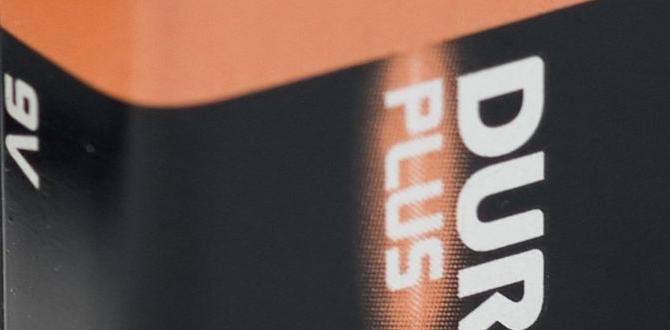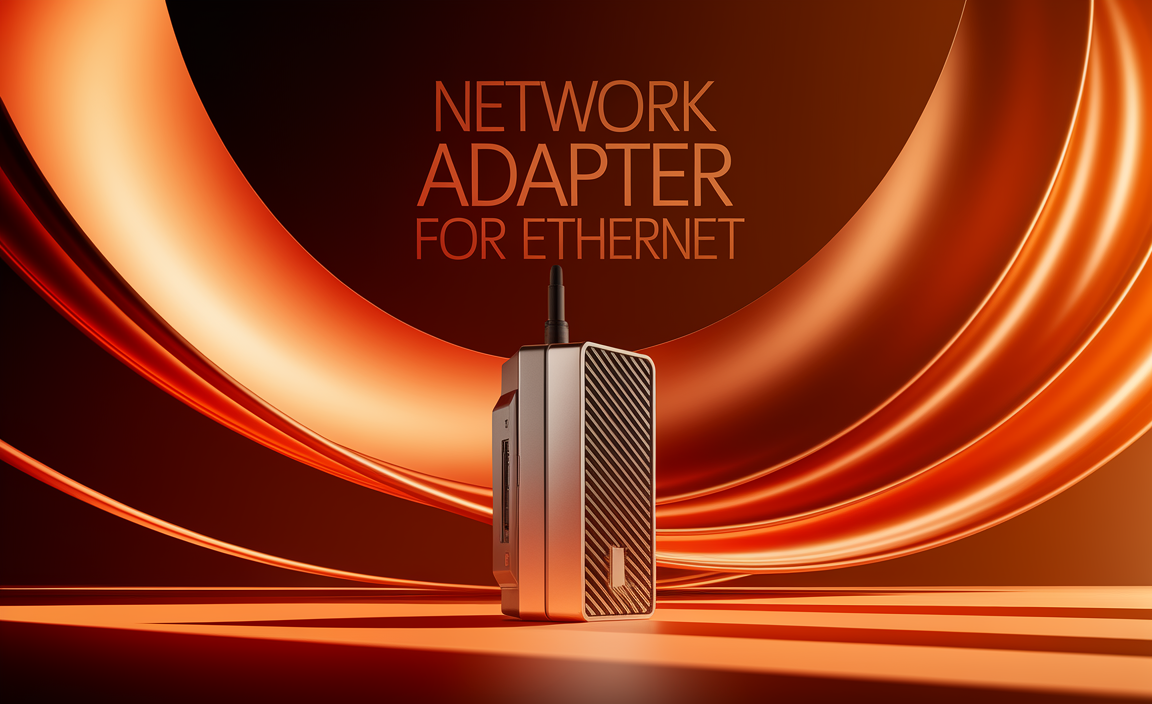Quick Summary:
A solar panel can effectively charge a 12V battery by converting sunlight into electrical energy. This guide provides simple, step-by-step instructions and essential tips for beginners to set up a reliable solar charging system, ensuring your battery stays topped up safely and efficiently.
Have you ever found yourself with a dead 12V battery, perhaps in your car, RV, or a small off-grid system, and wished there was a simple, hands-off way to keep it charged? It’s a common frustration, but the good news is, harnessing the power of the sun is more accessible than you might think! Using a solar panel to charge a 12V battery is a practical and eco-friendly solution.
This guide is here to walk you through everything you need to know. We’ll break down the process into easy steps, explain the key components, and offer practical advice so you can feel confident setting up your own solar charging system. No need for complicated jargon – we’re keeping it simple!
Why Use a Solar Panel to Charge a 12V Battery?
There are several great reasons why you might consider using a solar panel to maintain or charge your 12V battery. It’s not just for the techy folks or off-grid adventurers; plenty of everyday situations can benefit from this resourceful approach.
- Battery Maintenance: Car batteries, in particular, can lose charge if a vehicle isn’t used regularly. A small solar panel can keep the battery topped up, preventing the frustration of a car that won’t start.
- Off-Grid Power: For campers, boat owners, or those with small sheds, solar power offers an independent energy source for lights, radios, or other small appliances.
- Eco-Friendly Charging: It’s a clean way to generate electricity, reducing your reliance on traditional power grids and fossil fuels.
- Cost Savings: While there’s an initial investment, solar charging can save you money on electricity bills and battery replacements over time.
- Convenience: Once set up, it’s largely a set-and-forget system. The sun does the work for you!
Understanding the Basics: What You Need
Setting up a solar charging system for a 12V battery involves a few key components working together. Think of it like building with LEGOs – each piece has a job, and they all connect to make something work.
1. The Solar Panel
This is the heart of your system. A solar panel is made up of many smaller units called solar cells that capture sunlight and convert it into direct current (DC) electricity. For charging a 12V battery, you’ll typically look for panels rated for 12V systems. It’s important to note that a “12V” solar panel doesn’t actually output exactly 12 volts; it usually outputs a bit higher, around 17-20V, which is necessary for efficient charging of a 12V battery. This is often referred to as Vmp (Voltage at Maximum Power).
Panels come in various sizes and wattages, which determine how much power they can produce. For simple battery maintenance on a car or RV, a smaller panel (10-50 Watts) might be sufficient. For more significant charging needs or powering electronics, you’ll need a larger panel (100 Watts or more).
2. The Charge Controller
This is a crucial component, often overlooked by beginners. A solar charge controller acts like the brain of your system, regulating the flow of electricity from the solar panel to the battery. Its main jobs are:
- Preventing Overcharging: Batteries can be damaged if they receive too much charge. The controller stops the flow of power once the battery is full.
- Preventing Deep Discharge: It can also prevent the battery from discharging too much, which can also harm it.
- Preventing Reverse Current: At night, or when the panel isn’t producing power, the controller stops the battery from discharging back through the panel.
There are two main types of charge controllers:
- PWM (Pulse Width Modulation): These are simpler, more affordable, and suitable for smaller systems or when cost is a major factor. They work by essentially connecting the panel directly to the battery, but pulsing the connection rapidly to regulate voltage.
- MPPT (Maximum Power Point Tracking): These are more advanced and efficient, especially in variable light conditions. They actively find the optimal voltage and current from the panel to extract the maximum possible power. MPPT controllers are generally more expensive but can significantly outperform PWM controllers in real-world scenarios.
For most beginner setups and smaller panels, a PWM controller is perfectly adequate. If you’re investing in a larger system or live in an area with inconsistent sunlight, an MPPT controller might be worth the extra cost.
3. The 12V Battery
This is what you’re charging! Most people are familiar with car batteries, which are 12V. You might also be using deep-cycle batteries for RVs, boats, or solar power systems. These batteries are designed to be discharged and recharged many times. It’s important to know the type and capacity (measured in Amp-hours, Ah) of your battery to ensure you select an appropriately sized solar panel and charge controller.
A quick tip: always check the battery manufacturer’s recommendations for charging. Using the wrong charger can damage the battery and is a safety hazard.
4. Wiring and Connectors
You’ll need appropriately sized wires to connect the solar panel, charge controller, and battery. The gauge (thickness) of the wire is important; using wires that are too thin can lead to power loss and overheating. Standard solar connectors, like MC4 connectors, are often used for their weather resistance and ease of use.
You’ll also need:
- Battery terminals/clamps: To connect wires to your battery posts.
- Inline fuse or circuit breaker: For safety, to protect against short circuits.
- Wire strippers, crimpers, and screwdrivers: Basic tools for making connections.
5. Mounting Hardware (Optional but Recommended)
For a permanent or semi-permanent setup, you’ll need a way to mount your solar panel. This could be a simple ground mount, a roof mount for an RV or shed, or even a portable stand. The panel should be positioned to receive maximum direct sunlight, ideally facing south (in the Northern Hemisphere) at an angle that optimizes its exposure throughout the day and year.
Step-by-Step Guide: Connecting Your Solar Panel to a 12V Battery
Alright, let’s get down to business! Follow these steps carefully to set up your solar charging system. Safety first is always my motto!
Step 1: Safety First – Disconnect the Battery (if applicable)
If you are connecting to a car battery or any battery that is currently connected to a device, it’s best practice to disconnect the negative terminal first. This prevents accidental sparks. For a standalone battery, you can proceed with connections, but always be mindful of not letting the positive and negative wires touch each other or ground.
Step 2: Mount Your Solar Panel
Choose a location where your solar panel will get direct sunlight for most of the day, free from shade from trees, buildings, or other obstructions. Position it facing South (in the Northern Hemisphere) at an angle that maximizes sun exposure. You can find resources online for optimal tilt angles based on your latitude and the season. For example, the U.S. Department of Energy’s Solar Energy Technologies Office has extensive information on solar principles.
Ensure the mount is secure, especially if it’s exposed to wind.
Step 3: Connect the Charge Controller
This is where the wiring starts. Most charge controllers have clearly marked terminals for:
- Battery (BATT): Connect these terminals to your 12V battery.
- Solar Panel (PV or SOLAR): Connect these terminals to your solar panel.
- Load (LOAD – optional): Some controllers have terminals for connecting devices directly. If you’re just charging a battery, you might not use this.
Important Order: Connect the charge controller to the battery first. This allows the controller to sense the battery’s voltage and configure itself correctly. Then, connect the solar panel to the charge controller.
Using appropriate gauge wire, connect the positive (+) terminal of the charge controller’s battery output to the positive (+) terminal of your 12V battery. Then, connect the negative (-) terminal of the charge controller’s battery output to the negative (-) terminal of your 12V battery.
Tip: Install an inline fuse on the positive wire between the charge controller and the battery, as close to the battery as possible. This is a crucial safety measure.
Step 4: Connect the Solar Panel to the Charge Controller
Now, connect your solar panel’s output wires to the appropriate “PV” or “SOLAR” terminals on the charge controller. Again, ensure you connect positive to positive and negative to negative. Many solar panels come with a cable with MC4 connectors, which makes this connection straightforward and weather-resistant.
Once connected, if there’s sunlight, your charge controller should indicate that it’s receiving power from the panel and is charging the battery. Most controllers have indicator lights or a small screen to show system status.
Step 5: Double-Check All Connections
Before you consider the job done, go back and carefully check every connection. Ensure all wires are securely fastened and that there are no loose ends or exposed wires that could short circuit. Make sure all terminals are tightened properly.
Step 6: Monitor Your System
Keep an eye on your charge controller’s indicators or display. It should show that the solar panel is generating power and that the battery is charging. The charging rate will vary depending on the amount of sunlight. You can also use a multimeter to check the battery voltage occasionally to see it increase as it charges.
Choosing the Right Size Solar Panel: A Simple Guide
Selecting the correct size solar panel is key to an effective charging setup. Bigger isn’t always better if it’s overkill, and too small won’t get the job done. Here’s how to figure it out:
First, you need to know your battery’s capacity in Amp-hours (Ah). This is usually printed on the battery itself.
Second, consider how much power you need to replenish. This depends on how much the battery is discharged and how quickly you want it recharged. A general rule of thumb is to aim for a panel that can provide at least 10% of the battery’s Ah capacity per hour of peak sunlight. For example:
- For a typical 50 Ah car battery that might be slightly discharged: a 50-watt solar panel might be a good starting point.
- For a larger 100 Ah deep-cycle battery: you might consider a 100-watt panel or even two, depending on your charging needs.
Wattage is the panel’s power output rating. A 100-watt panel will produce more current than a 50-watt panel under the same conditions.
Here’s a simplified table to give you an idea:
| Battery Size (Ah) | Recommended Panel Wattage (for maintenance/slow charge) | Recommended Panel Wattage (for faster charging) |
|---|---|---|
| 20-40 Ah | 10-20W | 30-50W |
| 50-75 Ah | 20-50W | 75-100W |
| 75-120 Ah | 50-75W | 100-150W |
| 120+ Ah | 75-100W | 150-200W+ |
Remember that these are general recommendations. Factors like your location’s average sunshine hours, panel efficiency, and how deeply you typically discharge the battery will influence the best size for your needs. Resources like the National Renewable Energy Laboratory (NREL) offer tools and data that can help you estimate solar production more precisely.
Safety Tips: What to Watch Out For
Safety is paramount when working with electricity and batteries. Here are some essential tips:
- Read Your Manuals: Always read the instruction manuals for your solar panel, charge controller, and battery.
- Use Fuses: Install fuses or circuit breakers on the positive battery connection to protect against short circuits.
- Correct Polarity: Double-check that you are connecting positive (+) to positive and negative (-) to negative. Reversing polarity can damage components.
- Weather Protection: Ensure all connections exposed to the elements are properly waterproofed.
- Ventilation: If charging in an enclosed space, ensure there’s adequate ventilation, as batteries can release gases during charging.
- Stable Surface: Make sure your solar panel is mounted securely on a stable surface to prevent it from falling or being damaged by wind.
- Avoid Short Circuits: Never let the positive and negative wires or terminals touch each other or any metal object they shouldn’t.
- Handle Batteries with Care: Battery acid is corrosive. Wear protective eyewear and gloves when working with batteries.
Troubleshooting Common Issues
Even with the best setup, you might run into a few snags. Here are some common problems and how to fix them:
- Battery Not Charging:
- Cause: No sunlight, panel is dirty, loose connection, faulty charge controller, or battery issue.
- Solution: Check for sunlight. Clean the panel. Ensure all connections are secure. Test the charge controller and battery with a multimeter.
- Charge Controller Showing Error:
- Cause: Incorrect wiring, battery voltage too low or too high, internal fault.
- Solution: Check wiring is correct and secure, especially the battery connection. Refer to your charge controller’s manual for error code meanings. Sometimes, disconnecting and reconnecting the battery can reset it.
- Panel Getting Very Hot:
- Cause: This is normal, especially under direct sun, as the cells absorb heat. However, if it’s excessively hot and you suspect a problem, check connections.
- Solution: Ensure good airflow around the panel. If you suspect a fault, consult the manufacturer.
- System Charging Too Slowly:
- Cause: Insufficient sunlight, panel is too small for the demand, panel is dirty, or wiring losses.
- Solution: Ensure the panel is clean and optimally angled. Consider upgrading to a larger panel or a more efficient MPPT charge controller if needed. Check for any voltage drop in the wiring using a multimeter.
Frequently Asked Questions (FAQ)
Q1: Can I use a regular extension cord to connect my solar panel?
A: No, you should not use a regular extension cord. They are not designed for the DC voltage and current from a solar panel and can be a fire hazard. You need specific solar cables or appropriately gauged wires designed for outdoor and electrical use, often with UV protection.
Q2: Do I need a charge controller if my solar panel has a USB output?
A: If your solar panel itself has a built-in USB port, it means it has an integrated charge controller and voltage regulator for that specific USB output. However, if you’re connecting a raw solar panel directly to a 12V battery (which outputs higher than 12V), you absolutely need an external charge controller to protect the battery.
Q3: How many hours of sunlight do I need to charge a 12V battery?
A: The number of hours depends on the battery’s depleted state, its capacity, the solar panel’s wattage, and the intensity of the sunlight. On an average, sunny day, a properly sized panel might take anywhere from 3 to 10 hours of good sunlight to fully charge a moderately discharged 12V battery. Cloudy days will require significantly longer.
Q4: Can I charge a 12V battery directly from a 24V solar panel?
A: No, you cannot safely connect a 2




